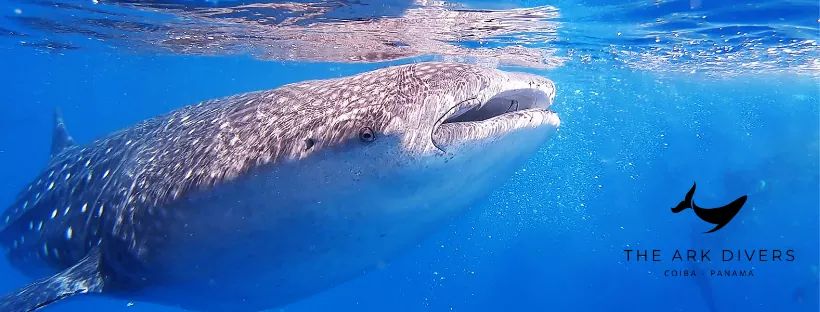The History of Coiba Island, Panama's Jurassic Park
- Mike Ritter

- Nov 20, 2023
- 4 min read
Updated: Nov 25, 2023
Coiba National Park is an archipelago of 38 islands located off the coast of Panama in the Pacific Ocean. The main Island Coiba is the largest Island in Central America.

It is part of Coiba National Park, a UNESCO World Heritage Site. The island has a rich and fascinating history that dates back centuries.
The first inhabitants of Coiba Island were the indigenous Ngabe people. These people had a strong connection to the land and its resources, relying on fishing and agriculture for their livelihoods. They also used the island as a place of refuge during times of war and political unrest.
Coiba disconnected from the mainland more than 12,000 years ago, due to rising sea levels, and its last known Indigenous inhabitants left in the mid-1500s.
In the late 19th century, Coiba Island was annexed by the Republic of Panama and became a penal colony. The island was used as a prison for some of the worst offenders of the time, including pirates, political dissidents, and common criminals. It was also used as a place of exile for those accused of political crimes.

Thousands of prisoners, mainly political prisoners, went missing during the dictatorship of Omar Torrijos and Manuel Noriega.
The prison was in operation for over 70 years, and during this time it became known as one of the worst prisons in the world. It was a place of torture, slavery, and death. The prisoners were not allowed to leave the island, and those who did manage to escape were often captured and killed.

In 2004, the prison was closed and the island was turned into a national park. Today, Coiba Island is a popular tourist destination, with its lush rainforest, beautiful beaches, and diverse wildlife. Visitors can explore the island's history by visiting the ruins of the former prison and learning about the Ngabe people who once called this place home.
Coiba, often called "Baby Galapagos" thanks to the large number of endemic species that lived and thrived here over the years with relatively little human interference. Researchers proved that Coiba and the Galapagos are connected through a natural “pipeline” in the Earth’s mantle, making the nickname even more appropriate.
Coiba Island is a fascinating place with a rich and unique history. From its time as a penal colony to its current life as a national park, Coiba Island has had a long and tumultuous journey. For those looking for an off-the-beaten-path adventure, Coiba Island is a must-see destination.

Located in the eastern Pacific, Coiba National Park is a natural wonderland of lush rainforests, pristine coral reefs, and a variety of wildlife species. It’s a great destination for those looking to experience the unique flora and fauna of this part of the world.
The park was established in 1992, in 2004 the prison was closed and it became a UNESCO World Heritage Site.
It has since become one of Panama’s most visited tourist attractions.
It’s located in the Gulf of Chiriquí, a large bay located between Panama and Costa Rica, and consists of 38 islands and islets. Coiba is home to a wide array of endangered species, such as the red-ruffed fruitcrow, which is the national bird of Panama. The park also boasts a wide variety of wildlife, including monkeys, sloths, crocodiles, and many more.
The coral reefs in Coiba National Park are also a major draw to tourists. The park is home to over 200 species of coral, making it one of the most diverse coral reef ecosystems in the world. The reefs are also home to a variety of fish, sharks, and other marine creatures, making it a great spot for snorkeling and diving.

In addition to its natural beauty, Coiba National Park is home to a number of cultural and historic sites. Visitors can explore ancient ruins, visit camps, or take a boat tour of the islands. There are also plenty of activities for visitors to enjoy, such as kayaking, fishing, diving and snorkeling.
Coiba National Park is an unforgettable experience for anyone who visits. With its
natural beauty, diverse wildlife, and cultural attractions, it’s an ideal destination for those looking to experience the beauty of the eastern Pacific.

Coiba Island acts as a refuge for birds that are no longer appearing on the mainland, like crested eagles, as well as Panama’s last significant population of scarlet macaws. Its waters are home to 800 fish species, 33 shark species (Whalesharks, bullsharks and tigersharks included) and also big marine mammals such as humpback whales and orcas. Reptiles like giant toads and green iguanas reside on the island, while hawksbill sea turtles inhabit its waters and nest on its beaches.
Coiba is also home to the infamous American Saltwater Crocodile. Inhabiting its rivers and sandy beaches the crocodiles, shark invested waters and the distance to the mainland made Coiba impossible to escape.

Coiba National Park is best to be visited from its nearest mainland point the little charming fishing village of Pixvae. No more then a 30 minute boat ride and visitors can enjoy the beauty of Coiba.
The Ark Divers - Beyond Diving



